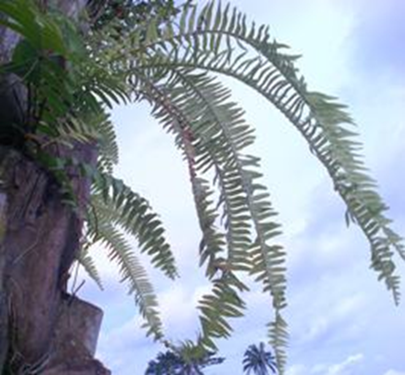By Vic Odarve
Not everybody loves
mathematics! "I don’t like numbers. That’s why I did not take up
engineering courses," said one student. This summed up everything about
his schooling! Since kindergarten up to high school, he has performed miserably
in mathematics. But one thing is certain: whether he likes it or not,
mathematics is a part of his everyday life. Unknown to many, math already
existed in nature the moment we took our first breath of life. What we do is
simply marvel at mathematics!
 |
| Petals on math sequence |
Also, nature teaches
mathematics! Nature and math work in never-ending harmony. From the particle
world to billions of stars spreading in our cosmic ocean, mathematical laws
seem to work, keeping the universe in order. From Newton’s law to Kepler’s laws
of planetary motion and Einstein’s law of relativity, math offers our deep
understanding of things around us.
Nature has its own way of
expressing mathematics! Patterns such as hexagonal beehives, spiraling
Fibonacci flowering trees, fractal flowers and plants, fruits, and leaves, and
many more are mathematics!
FRACTALS, BEEHIVES, AND
FIBONACCI’S NUMBERS
Fractals are repeating
geometric patterns. They are rough, fragmented geometric shapes that can be
repeatedly subdivided into parts and where each small portion can be viewed as
a replica of the whole. These are geometric designs we teach in classrooms. In
mathematics, this is referred to as iterations or algorithms. Newton’s method,
simplex programming, Gauss-Seidel, Jacobi, and many more algorithms are among a
few examples.
 |
| Mapua University, October 2022 |
Some plants exhibit simple
recursive operations such that, after a few repetitions or iterations, their
shape can be recognized as a repeated geometric pattern. It's mathematical!
Fractals in nature are always pleasing to our eyes – clouds, plant leaves and
fruits, galaxies, shells, and many more. Plants such as sunflowers, ferns,
cabbages, and papaya leaves are among a few of them.
The honeycomb structure is
also a natural mathematical exhibition. Look at its hexagonal shape. Its
cross-section is made of the comb, a latticework of hexagonal cells made of
beeswax. It is an expression of geometry in action. The design might be the
most economical in terms of labor and wax, hence expressing the least cost in
economics and linear programming in mathematics!
 |
| Leaves on Fibonacci's sequence |
The Fibonacci number is a
simple example illustrating the existence of sequences in mathematics just like
arithmetic and geometric sequences and progressions. But in the Fibonacci
sequence of numbers, each number is the sum of the previous two:
0,1,1,2,3,5,8,13,21, etc. And these numbers are exhibited in various
"family trees" and patterns of spirals of leaves and seeds. The image
of a nautilus shell approximates the sequence of the Fibonacci numbers in nature.
Once again, nature teaches math! Fractals, Fibonacci ‘s shells, and beehives
are iconic images that capture the beauty of nature displayed in mathematical
expressions. These displays are like ornaments to the eyes of mathematicians.
This is a living math in motion for us to love and appreciate nature!
Indeed, nature educates us on mathematics!



No comments:
Post a Comment